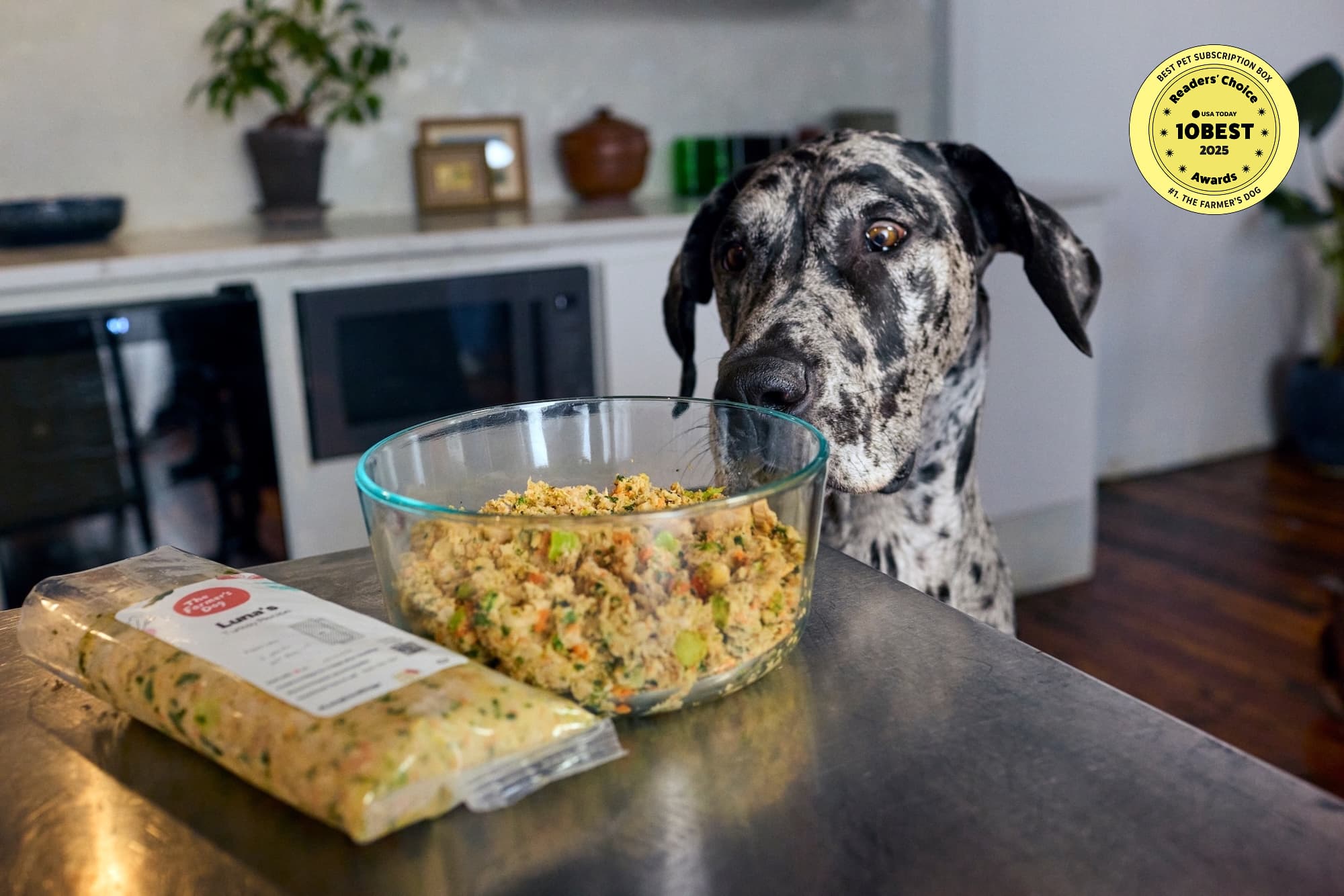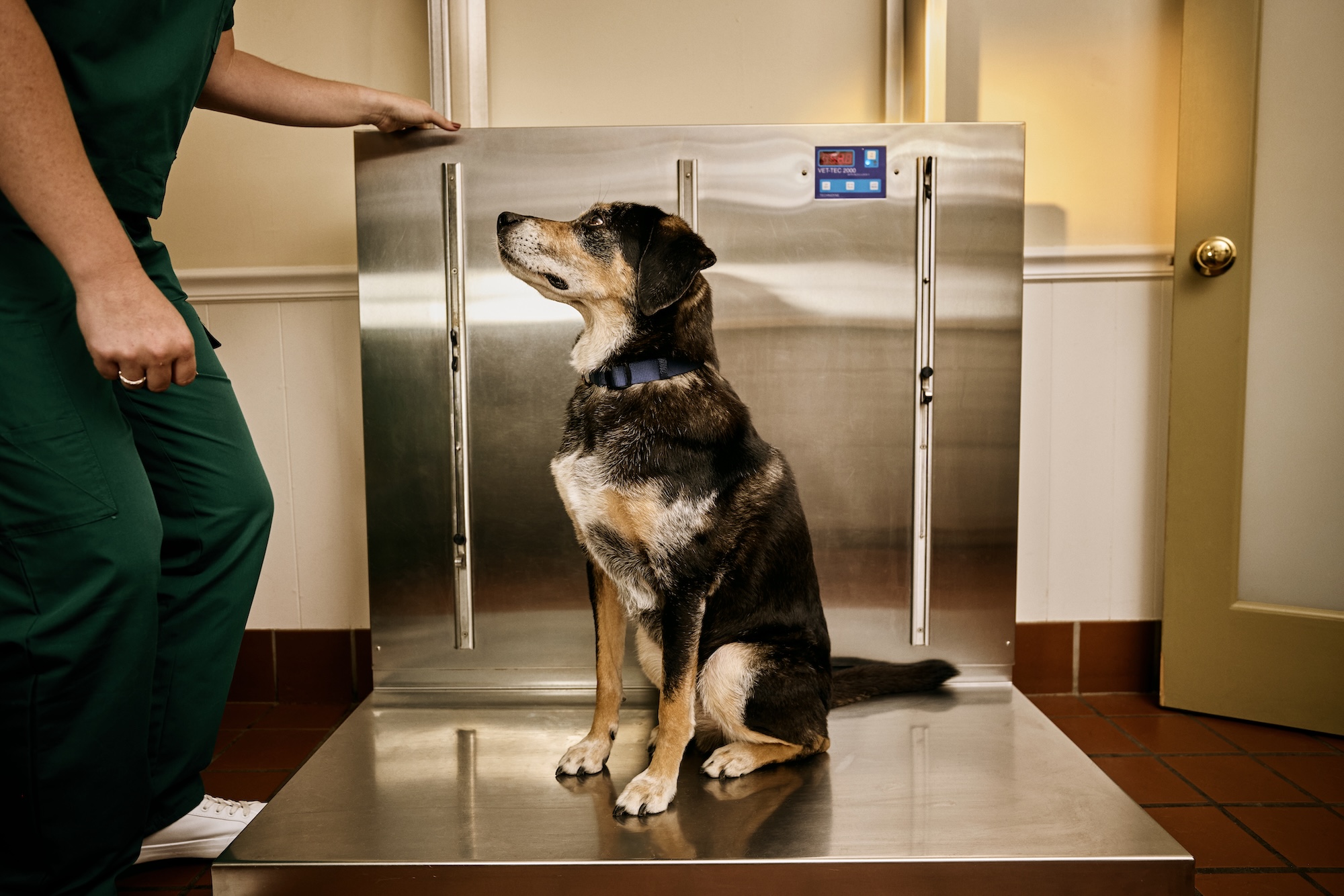- Though dog owners are traditionally advised to slowly transition from one pet food to another over several days to avoid gastrointestinal distress, there’s no evidence that switching food in itself causes stomach problems. Most dogs can switch to a new food without an extended transition period.
- We recommend a 24-hour fast before you feed your first fresh-food meal to your dog.
- A short fast is easier than you think. If you feed twice a day, give your dog their existing food for their morning meal. Skip the evening meal and provide only water until the next morning. If you feed once a day, no change is necessary!
- Don’t fast if your dog is under one year old, pregnant or lactating, or has diabetes or another serious health condition. Contact our customer service team if you have any questions.
Fasting has been shown to have numerous health benefits for humans—studies have linked temporary periods of not eating to everything from decreased inflammation and reduced risk of cancer to improved brain function and longevity. Unsurprisingly, the benefits of fasting apply to other animals, including dogs.
And when it comes to transitioning from kibble or canned to fresh food, for healthy adult dogs, fasting can act as a much-needed reset, making a fresh dietary start even fresher!
Here’s some important information to know about fasting, and how to use it to transition from dry or canned food to a fresh diet.
A more direct way to transition dog food
Most pet owners are familiar with the conventional wisdom concerning how to switch from one pet food to another. Most commonly, dog owners are advised that an abrupt switch causes gastrointestinal upset—typically bouts of diarrhea and/or vomiting—and to avoid this outcome, that they should transition a dog’s diet slowly, over a period of a few days to a week or more, slowly increasing the proportion of the new food.
It’s true that some dogs experience stomach upset when they switch to new food. Runnier-than-usual stool is a normal reaction for some dogs in the short term. But though some dogs are less tolerant of dietary changes, there are no scientific studies that show dietary change alone causes gastrointestinal distress.
For an optimal transition, we recommend a brief period of fasting before introducing a new, fresh-food diet.
Why fasting is a healthy option
The thought of depriving your pup of food might feel a bit odd. Dogs love eating! But fasting doesn’t mean starving. Many animals have evolved to go without food for long periods, so a brief fast carries little risk, and a lot of opportunity for better health for your dog.
While there are different kinds of fasting, for our purposes, fasting means pausing feeding for a period of 24 hours, during which dogs consume only water.
Fasting gives your dog’s body a break from the energy-intensive process of digestion. That break, of course, likely means there’s a reduction in calories which can be a benefit in itself. But multiple studies involving humans, rodents, primates, and dogs, have shown that fasting can affect many other bodily processes and can help optimize overall health.
Research has shown that fasting can have positive effects on the gut microbiome (the billions of microorganisms in an animal’s digestive tract) and the movement of food through the gut, both of which may play a role in the gastrointestinal symptoms associated with diet change.
Your dog’s gut is involved in digestion and metabolism, but that’s not all. This internal ecosystem directly or indirectly influences nearly every bodily process, including, and especially, immunity. The gut helps the body dispatch harmful elements, like toxins and pathogens.
This small break from food may reduce inflammation by reducing levels of insulin, an inflammatory hormone that regulates blood sugar and is released when we eat. The reduction in insulin can cause a decrease in both weight and systemic inflammation. Research shows that levels of the pro-inflammatory stress hormone cortisol also fall during a fast.
In a well-known study of mice, researchers saw not only decreased insulin levels and blood sugar with fasting, but an increased ability for the neurons in the brain to resist stress. Subsequent research indicated that intermittent fasting can have the same protective effect against damage from a stroke, and can slow cognitive decline in mice who had similar symptoms to Alzheimer’s.
Most simply, a short fast helps your dog’s body reset.
Switching food: Fasting method
To transition your dog’s food using fasting, we recommend the following:
To start, pick a few days when there won’t likely be additional activity, stress or an unusual disruption to routine (starting a fast is not recommended if you’re about to go on a road trip, or you’ve just brought home a new baby!)
If you feed your dog twice a day: After your box of food arrives, skip the next meal you’d typically feed. Provide plenty of water, but no other food that day (no treats, please!) After that one skipped meal, resume feeding the recommended portions as normal.
If you feed once a day: no changes needed! After you’ve fed the last meal of your dog’s existing food, don’t feed any other food including treats. Start feeding their new food at the same time as usual the next day.
Continue feeding the suggested daily amount of The Farmer’s Dog food thereafter.
If you have a healthy, adult dog, it’s a good idea to continue feeding once a day. Many veterinary nutrition experts recommend it (even high-performance working dogs thrive on a once-a-day feeding schedule). Try to feed your dog’s meal at approximately the same time each day. If you prefer to feed twice a day, consider feeding both meals within an eight-hour period. Feeding within this window creates a healthy routine; it also provides your dog’s body a short break from digesting food, allowing it to focus on other health-sustaining functions.
If your dog is pregnant, a puppy, or has any medical conditions, check with your veterinarian on the ideal feeding schedule.
What to expect
For many dogs, a short period without food is fairly easy to handle. Most dogs will tolerate missing a meal without any issue.
It’s true that dogs (like all of us) love eating. But since many dogs will be only skipping an evening meal, the “hardest” part of the fast will be during the night. Some dogs may get hungry when they expect to eat but this should subside. Provide lots of water and maybe some extra (not too strenuous) play time.
Some dogs may vomit bile in the evening, which is normal and not a cause for concern–it means the stomach is empty, which is the intended result.
If your dog vomits more than once, it could be a sign of another issue and you should consult your veterinarian.
Who should and shouldn’t fast
Fasting is recommended for healthy adult dogs only.
There are some dogs who should NOT fast, unless directed by a veterinarian. Those dogs include:
- Puppies—dogs should be one year or older.
- Dogs with diabetes, cancer, or dogs who are on a prescription diet for joint, liver, or kidney conditions.
- Pregnant or lactating dogs.
Fasting: more isn’t better
It’s important to keep in mind that if you’re just starting out with fasting, keep fasts to 24 hours only. Fasting shouldn’t mean starvation—ensure your dog is eating the recommended amount of fresh, healthy food after their short fast to maintain all their body’s vital tissues and processes.
For any questions about fasting or starting to feed The Farmer’s Dog, get in touch with our customer service team. For any concerns about digestive issues and your dog, contact your veterinarian.




